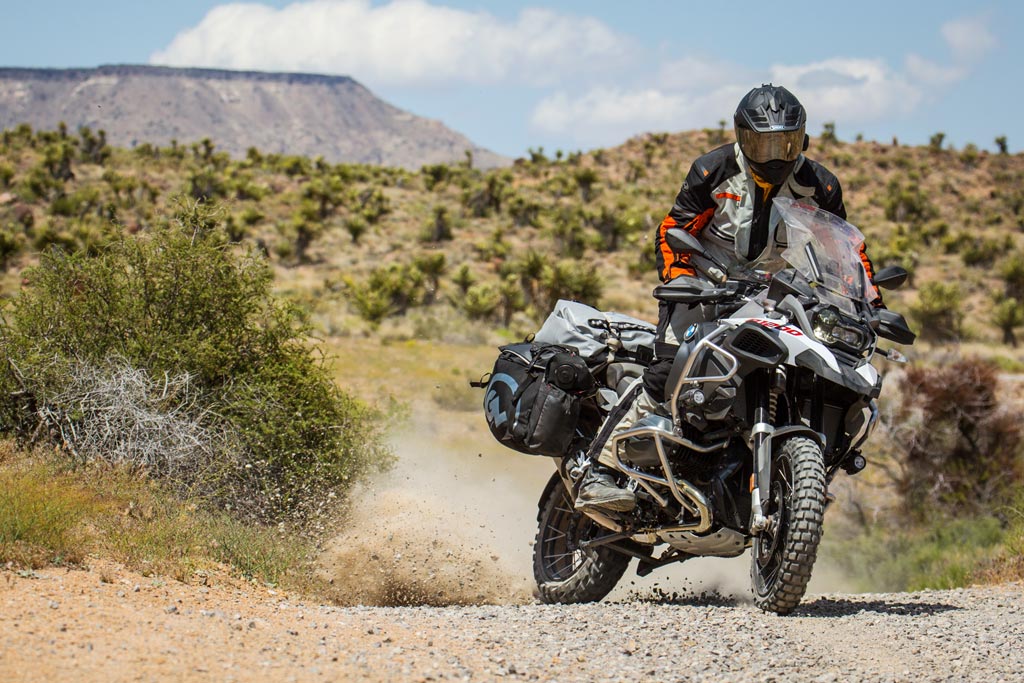One of the most popular conundrums in the motorcycling community revolves around luggage, or the options regarding luggage. Nowadays, there are a lot of innovative luggage solutions designed for various genres of motorcycles as well as for purposes. Be it storing your tools, carrying medicines, carrying luggage, of forcing everything but the kitchen sink in, there is motorcycle luggage for every need.
The dilemma begins when you are out buying your first piece of luggage. There are two broad choices here. Either get a set of metal or plastic panniers to mount upon a frame affixed to your motorcycle, or get a set of tough fabric bags to tie, cinch, or clamp down on the bike’s seat, front beak, tank, tail rack, basically anywhere you can find a place.
So what luggage works for you?
We will go over a few pros and cons of both luggage types to arrive at a satisfactory answer.
Hard Luggage
Hard panniers are waterproof. Not water-resistant, but waterproof. Due to their metal or ABS plastic construction and modern waterproofing solutions like rubber gaskets and seals, there is an infinitesimally small chance of you ending up with the dreaded situation of wet clothes and electronics at the end of a long, hard day of riding.

No worrying about luggage flapping away or threatening to come undone when you are busy tackling the next curve.
Modern panniers are also mounted on a motorcycle keeping aerodynamics in mind. In effect, they act as spoilers for the bike, contributing to increased downforce. Plus, if you happen to take a spill in a sticky situation, your bike doesn’t land all the way on its side, with the panniers keeping it from going horizontal. At such times, it is easier to pick it up and get going again.
Due to the ease of placing locks on the boxes, you can rest easily knowing that your essentials are in a secure space, even if the motorcycle is not in front of you. Saves you the trouble of having to lug all your gear to the hotel room when you just need a pair of shorts and your toiletries.
Panniers can also work as camping stools, mounting points for tents and sleeping bags and other assorted items, and are a better form of luggage to carry delicate items like laptops, drones, etc around.

Panniers are helpful in protecting your bike in the case of an accidental spill. Image: Pinterest
On the flip side, panniers add their own weight to the bike, which includes the frame upon which they are mounted. This is not an insurmountable problem for higher-powered bikes, but is still a point to consider. Due to their metal construction, you need to keep the presence of the panniers in the back of your mind while navigating through tight spaces. The centre of gravity and weight distribution of the bike also shifts majorly, needing a conscious adjustment from your side to the new parameters.
Finally, if a manufacturer rates hard luggage at, say 60 litres, it means that is the absolute maximum volume you can get out of it.
Soft Luggage
Flexibility is the keyword when it comes to soft luggage. You might think soft bags won’t be as durable as hard boxes, but the soft luggage solutions of today use advanced abrasion-resistant and water-resistant polymers in the construction. This means that soft bags are not too far behind hard luggage in terms of durability.
Soft luggage doesn’t require dedicated mounting points, with manufacturers designing the bags to use parts of the bike itself to act as mounts. Tie down the bags to the footstep, grab rail, frame, over the fuel tank, or even the front fender of a bike, and you can be sure they will sit tight if you have secured a good purchase for them.

You have a lot of mounting flexibility with magnetic or strap-based soft bags.
If you have not filled the saddlebags to their full capacity, they’ll assume a size proportional to the amount of luggage inside them, meaning they are more compact than hard panniers. You can also choose to mount them closer to the centre of your bike to balance the weight distribution. Plus, if a manufacturer claims its saddlebags can swallow 50 litres of luggage, you can cram a couple extra litres in there exploiting the bags’ flexible construction.
Mounting and unmounting soft luggage does not require any tools. You just need to undo a few buckles, knots and velcro tabs to take the saddlebags with you.
Coming to the downers of soft luggage, a pretty nasty fall can damage even the best of saddlebags. Because they are flexible, things you keep inside the bags can take a hit from external objects poking into them (some manufacturers offer thick padding to dampen external impacts, but there is no substitute for good old metal).
A good point to consider is the speed ratings of soft luggage, which does not affect panniers. Even the most cruelly tied down saddlebags are susceptible to tear their stitches off and peel away if you are doing sustained high speeds on your motorcycle. Check the speed ratings and the efficiency of the mounting system to make sure you don’t have to end up reaching your destination with only half the luggage you started out with.

Does soft luggage make a motorcycle look more appealing? Image: Asphalt & Rubber
Verdict
There is no clear verdict in such a situation. It all boils down to your personal preferences. I would just say that if you need to unlock space to carry a lot of luggage, panniers are the way to go. If you are the type who can make the bare-minimum approach work, soft bags could be your thing. Aren’t motorcycles made for the bare minimum experience in the first place?
